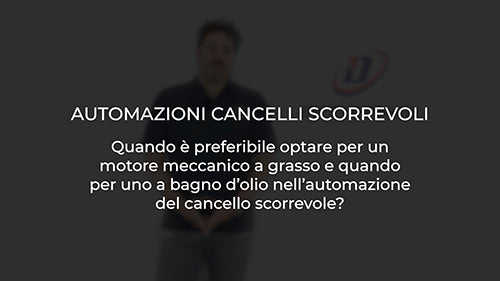When is it preferable to opt for a grease motor and when for an oil bath motor in sliding gate automation?
Types of motorization for sliding gates
The motorization systems for sliding gates are mainly divided into two categories: grease motors and oil bath motors. The choice between these two systems is crucial to ensure optimal performance based on specific needs.
Grease motors
Grease motors are designed to handle lighter weights. They are ideal for residential gates or structures that do not require excessive loads. The main advantages of grease motors include:
- Reduced maintenance: Grease motors require fewer adjustments and maintenance interventions.
- Lower costs: They are generally more affordable compared to oil bath models.
- Easier installation: They are simpler to install and manage.
Oil bath motors
When it comes to large sliding gates or significant weights, it is necessary to opt for oil bath motors. This system offers unique advantages:
- Effective cooling: The oil bath allows better heat dissipation, extending the motor's lifespan.
- Higher load capacity: It enables operation with greater weights compared to grease motors.
- Reliability: Greater resistance to wear and mechanical fatigue.
Choosing the right motor
The decision on when to choose a grease motor and when to choose an oil bath motor in sliding gate automation mainly depends on the weight of the gate to be moved. A careful analysis of technical specifications and usage needs ensures optimal results.
In summary, grease motors are suitable for light applications, while oil bath motors are preferable for heavier uses, thanks to their cooling capacity and improved resistance. An informed choice between these two options will ensure efficient and durable operation of the sliding gate automation system.

